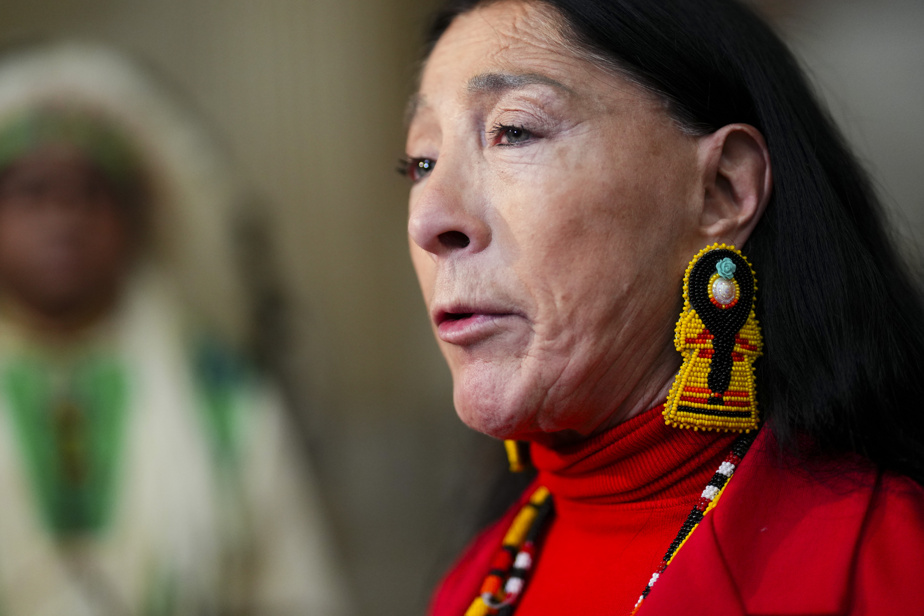(Ottawa) The Federal Court verbally approved Tuesday the historic $23 billion settlement that sees Ottawa compensate more than 300,000 First Nations children and their families for the chronic underfunding of child welfare services in reserves.
The settlement comes more than 15 years after the Assembly of First Nations and the First Nations Child and Family Caring Society of Canada jointly filed a human rights complaint that sparked a battle several years of legal dispute with the federal government.
The Acting National Chief of the Assembly of First Nations (AFN), Joanna Bernard, spoke of the resilience of the plaintiffs in defending their interests and those of their communities. She said her organization was “very, very happy” with the outcome and wanted the children and their loved ones to receive compensation as quickly as possible.
The executive director of the First Nations Child and Family Caring Society, Cindy Blackstock, said on X (formerly Twitter) that she was thinking of the victims and looking forward to seeing “full support » for them as the process continues.
The company also suggested in a statement that it hopes this “historic” settlement will be the last. It says we owe it to the victims of this case, the survivors of residential schools for indigenous children and the Sixties Scoop, as well as the public “to ensure that Canada ends its continued discrimination against respect for First Nations children, youth and families and to prevent this from happening again.”
The 2007 human rights complaint alleged, among other things, that Ottawa’s underfunding of child welfare services on reserves amounted to discrimination under the Charter. She argued that First Nations children were being denied equal access to support available to other Canadians, from school supplies to medical equipment.
Recognize the wrongs
In 2016, the Canadian Human Rights Tribunal found that First Nations children had indeed been subjected to “deliberate” and “reckless” discrimination by the federal government.
The Tribunal found that the services provided by the government had a negative impact on First Nations and that, in some cases, these services were denied to them due to the role of the government.
“The committee recognizes the suffering of First Nations children and families who are or have been denied a fair chance to stay together or be reunited in a timely manner,” the 2016 decision states.
In 2019, the Canadian Human Rights Tribunal ordered Ottawa to pay $40,000 – the maximum penalty for discrimination – to every child inappropriately removed from their home starting in 2006, as well as their parents or grandparents.
Child welfare was also among the central issues flagged in the report of Canada’s Truth and Reconciliation Commission, which spent six years examining the painful system of church-run, government-funded residential schools , which operated from the 1870s to 1996.
The proposed settlement includes $23 billion in compensation for more than 300,000 children and their families, as well as an additional $20 billion to reform the child welfare system.
Ottawa proposed last year to spend 20 billion to reform the child protection system and an additional 20 billion for compensation. But, the Human Rights Tribunal has expressed concerns that not all eligible claimants may be able to receive the compensation.
An important step towards reconciliation
Indigenous Services Minister Patty Hajdu said approving the settlement was one part of broader reform of the child welfare system, and survivors argued a monetary award would not heal the traumas they experienced.
“Families have been broken. People grew up without knowing anything about their origins, their true connection with culture or language,” Minister Hajdu told reporters on Tuesday.
In an interview, Mme Hajdu added that reforming the child welfare system to make it work in the best interests of children and families takes time.
She pointed to legislation passed in 2019 previously known in Parliament as Bill C-92, which gives First Nations jurisdiction over child protection if they choose to opt in. So far, ten agreements have been signed across the country, she said.
“I can tell you that it is extremely touching when a community has its own law and begins to assume custody and control of its own children,” she said.
As for the scope of the regulation, Mme Hajdu said she understood how difficult it might be for people to “understand the extent of the damage that has been done to families.”
“These are individuals, families, parents of children who have suffered enormously trying to do their best under a deeply discriminatory system,” she said.
Crown-Indigenous Relations Minister Gary Anandasangaree said the settlement is an important step toward reconciliation.
“The cost of reconciliation is becoming higher and higher as we postpone very critical decisions, particularly regarding past harms,” Mr. Anandasangaree told reporters on Parliament Hill.
“And what we’ve done today, I think, is really recognize the enormous harm that these practices have caused to young people in particular, but also to their families and their communities. »
Monday, Mme Blackstock said she “felt encouraged that this could finally be some measure of justice for the many victims, children, youth and families of discrimination in Canada.” »
However, she indicated that problems persist in the child protection system.
Mme Blackstock argued that First Nations children living on reserves are still subject to inequitable access to health care and that Ottawa must do more to protect them.
“We must ensure that the Government of Canada truly treats children fairly. Not just today, but the day after tomorrow and the year after,” she said Monday.
The Federal Court will resume its hearings on Thursday, notably on the legal fees requested by the lawyers involved in the case. This bill could reach 80 million.
Mme Hajdu said the federal government is appealing the cost in court and negotiating “in good faith” with lawyers to find a more “reasonable” amount.
